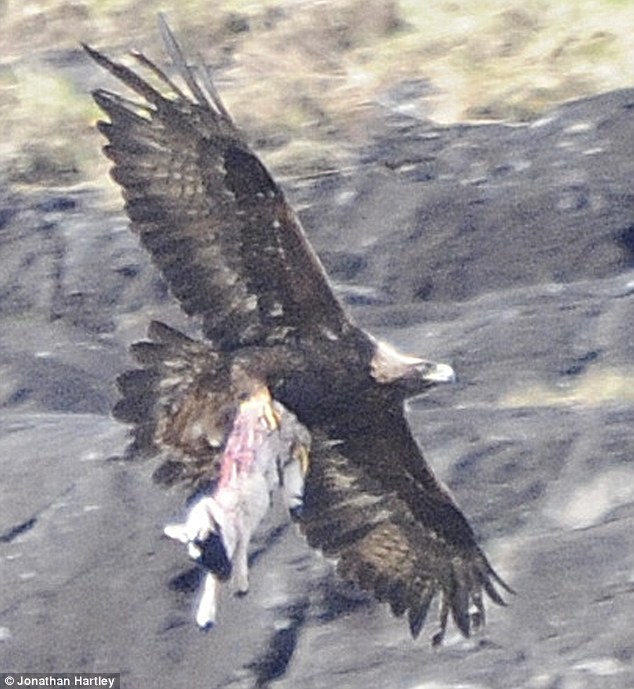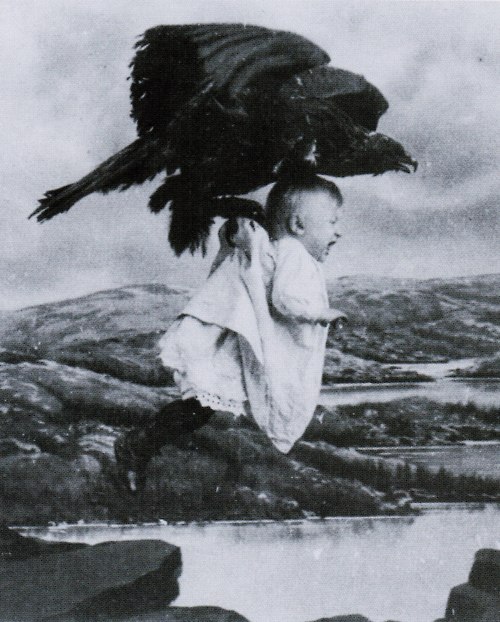Baby-Eating Eagles November 5, 2010
Author: Beach Combing | in : Contemporary, Medieval, Modern , trackback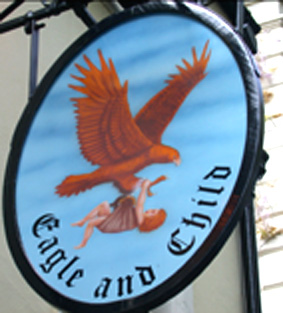
When Beachcombing first came to Italy, many years ago, he spent a summer in a room with an enormous wardrobe – the stuff of C.S. Lewis fantasies. This wardrobe was not only huge, but it also had a memorable print on the front. An eagle was being attacked by a weepy mother and in the eagle’s claws was a small baby that the mother had foolishly left in a meadow. The image entered Beachcombing’s dreams – be careful what you put on your wardrobes – and Beachcombing has set himself, in an act of nostalgia, a question: is there a single well-documented case of an eagle carrying off a baby or child?
Any glance in a library or through our electronic databases would suggest that not only are there many cases, but that several have been extremely well documented. However, most stories have one of two problems with them: the first a failure of perception among the attacked; the second a failure of perception among those who hear and then pass on the story.
First, the attacked. Many stories that involve eagles ‘grabbing’ children are likely misinterpretations of eagles attacking children (rather a different thing), attacks possibly provoked by children coming close to the bird’s nest. E.g. Sept/12 1899 the New York Times carried a story entitled Eagle Carries off a Child relating to Connecticut. In fact, the story is really about an eagle savaging a four-year-old-girl – ‘the bird succeeded in carrying the girl a short distance’. Probably this was just the bird wrestling with the child and lifting it momentarily into the air or even the bird just rearing upwards with its claws embedded in Connecticut flesh.
Then, the second and far more substantial problem is that many stories have absolutely no basis in fact. For example, an article in the Family Magazine for October 1836 describes a series of eagle attacks ending in children being carried off and (often) killed. But it is striking that these stories do not involve, for the most part, names or dates. So, the anonymous author explains how – ‘we remember some years ago’ – that from the foot of the Jung Frau in Switzerland it was possible to see clothes stuck on a high rock that belonged to a child that had been carried off by a bird of prey. But, of course, locals love telling stories like this to tourists…
And, especially in the nineteenth century, the combination of illicit gore (many stories end with the child’s eyes being torn out), melodrama (the crying mother is a fixed point) and morality tale (don’t leave your children unsupervised!) was irresistible. Eagles were an important part of ancient mythological systems and, naturally, they emerged in modern myth in the same ways that wolves chewed their way into medieval myth.
Even the most circumstantial descriptions do not, in the end, convince. Beachcombing is sceptical, for example, about the following account lifted from an Australian Newspaper dated June 14 1904, relating to an event of May 4 1904 in Scotland.
While a little girl about eighteen months old, the only daughter of a young Sutherlandshire crofter living about a mile from Invershin Station, on the Highland Railway [in Scotland], was playing at her father’s cottage door on Saturday evening, an eagle swooped down, gripped her in its claws, and carried her off to the mountains, where some hours later her dead and mutilated body was found by a gamekeeper. At first there was no clue to the mystery of her sudden disappearance. The little one had been playing in the sunshine while her mother was baking bread, and her father was still at work in the fields. Her baking finished, the mother prepared tea and called the chid. As there was no response, she went out to look for her, and not seeing her anywhere, became alarmed and went in search of her husband. Together they searched the country road, the fields, and the hillside, calling the little one’s name, and waiting in vain for an answer. Crofters and gamekeepers and all their neighbors soon joined in the search in the gathering dusk and under the supposition that the baby had been kidnapped by gypsies or travelling tinkers, of whom several had been seen in the neighborhood earlier in the week, search parties were formed to scour the countryside. No trace of any strangers was found, however, and not the faintest clue to the little one’s fate. In despair the father headed a party to search the river, though it was felt to be impossible that the child could have strayed that far. Meanwhile, a gamekeeper’s part was hunting through the dense broom which covered a neighbouring hill, and while this investigation was in progress one of the gamekeepers, recalling stories of lambs being carried away by eagles, made his way towards the rocky crags near the crest of the hill. In a crevice in the rocks he saw a tiny shoe, and in a deeper cleft a little higher up he found the body of the missing child. The sight was a pitiful one. Both eyes were missing, and the child’s face was covered with blood. From her right cheek a piece of flesh had been torn away, and on her arms, hands, and neck were other wounds which told their own terrible story. On the clothing were found outlined in the little one’s blood, the cruel marks of an eagle’s claws, and clutched in the baby’s tiny hand was a bunch of eagle’s feathers. The gamekeeper shouted for his fellow-searchers when he discovered the child’s body. Swiftly they gathered round the cleft in the rocks. There they stood silent with horror and sorrow when they saw the child. Some of them, rough, strong, sturdy men, wept. The little one’s mother was brought, to the spot by the commotion and before the news could be broken to her, had caught sight of the baby’s mangled body. With a heart-broken cry she clasped the little one in her arms. She fainted and had to be carried unconscious down the hill-side to her cottage. The news soon spread through all the countryside, and the gamekeepers took their guns and spread themselves out in search for the eagle. The quest has been unsuccessful so far. Two years ago an eagle attacked and killed a deer in Sutherlandshire and fed on its body until the keepers drove it off. Lambs are sometimes missed and their skeletons afterwards found on the hilltops. It is fifty years, however, since such a tragedy as that of Saturday occurred.
Beachcombing would be happier with this account if he could find it reported with names in a local or, at least, a Scottish newspaper. After all, even a London report runs the risk of being a ‘legend’ sent south by a correspondent in Edinburgh, who got chatting to a Sutherlandshire farmer in a pub on the Royal Mile.
Beachcombing has found a retrospective report from a New Zealand paper in 1912 that names the family as Fraser – but calling a Highlander ‘Fraser’ is a little bit like calling a Welsh man ‘Jones’ or an Englishman ‘Smith’. Then there are all the suspicious details: the feathers in the tiny hand, the mother accidentally seeing the body…
However, the biggest objection with this story is biological. Ron Clarke, an expert on birds of prey, is quoted, in an online article, as saying that ‘[Eagles] can pick up and carry four or five pounds, maximum, and actually fly off with it. They can lift a little more and hop it along, but they can’t carry it off.’ Going at full speed they might do better: ‘On a wide-open beach, I have no doubt that an eagle with a full head of steam could pick up a six- or eight-pound dog and just keep on going. If it landed to kill a ten-pounder, and then tried to pick up and fly from a dead stop, could it get off the ground? Probably not.’ Just to put this in children terms, a new born rarely weighs less than six pounds… An eighteen-month-old baby (see the story above) will normally weigh between twenty and thirty pounds even if they’ve starved on a crofter’s diet.
It is possible then that sometime in the history of the world, somewhere, an eagle picked up a new born and carried it a short distance, perhaps killing it – there may even be an example from hominid archaeology. But Beachcombing is emphatic: the eagle-carrying-child news report is an urban (or rural?) myth.
It is also a myth that has died out: as Beachcombing suggested above it has a very nineteenth-century blend of morality and melodrama. But some modern mutants are making their way back into the news-stream. Enjoy this contemporary version: ‘Do you know of an instance in the last couple of years where an infant child was carried off by an eagle at a picnic at Lake Palestine, just outside Tyler, Texas? The rumour continues by saying that the child’s father hunted down the bird killed it and is currently serving time for the act.’ Eagle anxiety and environmentalism gone mad: what better combination?
Beachcombing would love to hear any other eagle and child stories: especially ones that look as if they are well authenticated. Drbeachcombing AT yahoo DOT com
PS That wonderful British eccentric and naturalist Frank Buckland looked into this question in the 1880s (he was interested in the many north-western pubs called the Eagle and Child) and got this letter from one ‘W.R.’
‘…The best written and best known story in Scotland, is that written by the late Professor Wilson [ed?], which I enclose… Similar stories are told of eagles in America, Switzerland, &c., and even here, in the far north, the thing is believed to have happened more than once. I am glad to say, in Orkney, eagles are strictly preserved by the land-owner of the only island in which they now breed, viz., Hoy. ‘ Many stories ‘—I quote from the Natural History of Orkney —are told of the great strength of the eagle. Wallace mentions a well-authenticated case of one John Hay, who, when a child, was carried off by one of these birds. There is at present a woman living in the Island of Graemsay, who goes by the name of the ‘Erne’, from a tradition that her grandmother, when an infant, had nearly likewise fallen a victim to their voracity.’
Beachcombing would very much like to get his hands on Professor Wilson’s account but is (as is his nature) suspicious about much of the rest – in the ‘far north’ myth comes thick and fast. For example, the Family Magazine (noted above) refers to a boy on the Isle of Skye who went by the name Eagle – in Gaelic – because an eagle had tried to steal him from his parents… Sound familiar?
***
Dec 1, 2010: Deb Lane remembered a 2001 story of an eagle attacking a child on a beach in Mass – ‘it swooped down and clawed a 3-year-old girl on the back’. Don P. put together some eagle-child reports from the New Zealand newspapers – 1, 2, 3, 4, 5, 6 – though remains a sceptic: ‘I enjoy these stories but like you find them hard to stomach. I am a keen birdwatcher and think the eagles were a good excuse for other explanations.’ The last clause is all too credible… Then Michael Mercurio rounded off some fascinating emails with this trip to the wild side with a ‘thunder bird’ attack : Beachcombing has not the slightest idea what to make of this! Thanks to Deb, Don and Michael!!
31 Dec 2010: On the continuing debate about eagles and their ability to pick up babies J.T. sends this eerie video in and another with a glider as victim. There is certainly some sense of the power and the size of a large eagle here! J.T. also brings up another urban myth with birds: the pelican that ate the chihuahua (another day, another post). Thanks again J.T.!
31 Jan 2010: John E has written in adding to early comments about Thunderbird sightings. ‘I assume you are aware of the many, many accounts of ‘thunderbirds’ which have appeared throughout history and continue until today. While not strictly baby-eating eagles, the thunderbirds appear to be some sort of relict avian along the lines of extinct teratorns such as Argentavis magnificens, the largest bird capable of flight. But there are also numerous contemporary sightings, particularly in the Phillipines/Indonesia of flying creatures with leathery skin and wings which compare most closely with the Pteradons – what we used to call the ‘pterodactyls’. In these sightings wingspans of up to 30’ have been reported. One particular event stands out. On July 25th, 1977 in Lawndale, Illinois, US, there was a aborted bird-snatching of a 10-year-old boy, relatively well-documented and witnessed by several adults. There had been numerous sightings of flying birds of an unheard of size in that part of Illinois since April of that year. On the evening of July 25th several adults as well as two other boys playing with Marlon Lowe watched as two huge black birds, each with a 6’’ long hooked bill and a single white ring around a 6’’ long neck, flew very low over their neighborhood. The larger of the birds chased the screaming Marlon who attempted to run away. Several adults and the two other boys watched as the swooping bird grabbed the 56-pound Marlon by the shoulders with its clawed feet and actually lifted him offf the ground and attempted to fly away. Marlon’s mother ran to the bird, which was still low. striking it and clutching at Narlon, causing the bird to release the boy, who fell with his mother onto the ground. An excellent account of the event by the cryptozoologist who investigated the case (and IMO did a creditable job). Now the birds might not have been eagles, and Marlon, who was barely lifted off the ground, was not carried away to a lofty aerie to have his body cruelly torn apart and gorged upon to be regurgitated to a wriggling clutch of screeching eglets; but the provenance IMO makes up for those deficits.’ Beachcombing still has no idea what to make of this. MD, meanwhile, writes in to say: ‘An extinct giant eagle native to New Zealand, Haast’s eagle, existed there for five hundred or more years after Maori populated the country. This bird was of a size that would have made it a danger to an unwary human, especially a child, with a 3-metre span and 20-25kg predatory mass with a raptor’s beak and claws. It’s assumed to have preyed on moas, another extinct (more recently. perhaps less than a century before Europeans arrived) giant, but flightless, and up to 3 or more metres tall. There are the usual oral tradition stories of Maori people attacked by giant birds, but in the case of Haast’s eagle, very much less unlikely than elsewhere, and perhaps even probable at some time in history.’ Thanks John and MD!
24 Feb 2011: George writes in with some precious material. Lawrence Green, a Southern Africa chronicler, wrote about the possibility of lammergeyers (bearded vultures) carrying off childern in chapter 15 of his book On Wings of Fire If you are not familiar with Green, he is very entertaining and perhaps of particular interest to you as one of his books was ‘South African Beachcomber’. Thanks George!! George has also put Beach onto a great Mexican elephant story. More to follow…
7 March 2011: Ostrich writes in with this link to a photograph of an eagle carrying, without much effort, a lamb up and away. Thanks Ostrich!
18 March 2011: And now Ashley over at Sedition writes in with this outstanding period photograh. What were they thinking…
17 Sept 2011: Thanks to Andy the Mad Monk for this link of modern fears over eagles and babies in Scotland: ‘The Scottish Gamekeepers Association has raised concerns about whether sea eagles could differentiate between children and their natural prey. The comment follows an incident where a senior clergyman was injured by a young eagle as he tried to scare it away after it attacked one of his geese.The SGA has called for a public inquiry into the impact of the reintroduction of the birds on the east coast. RSPB Scotland has described the small child claim as ‘alarmist nonsense’…. Thanks Andy!
Nov 2013: We’ve returned to this theme with a look at alleged eagle videos of baby stealing.
3 May 2016: This article reminded me of your piece on eagles taking babies. This joey weighed four kilos or almost nine pounds. A little up on the weight that the expert in the piece thought likely. Damned shame the constable wasn’t wearing a chest cam at the time.
Beach replies: I’ve given a screen capture of the first part of the article. First, it is higher than suggested above but the account makes it sound as if the eagle just had enough strength to get the kangaroo over the fence and then landed a little of the way down the road, even with a policeman charging afterwards. The eagle was not going to head off to his nest with the joey.
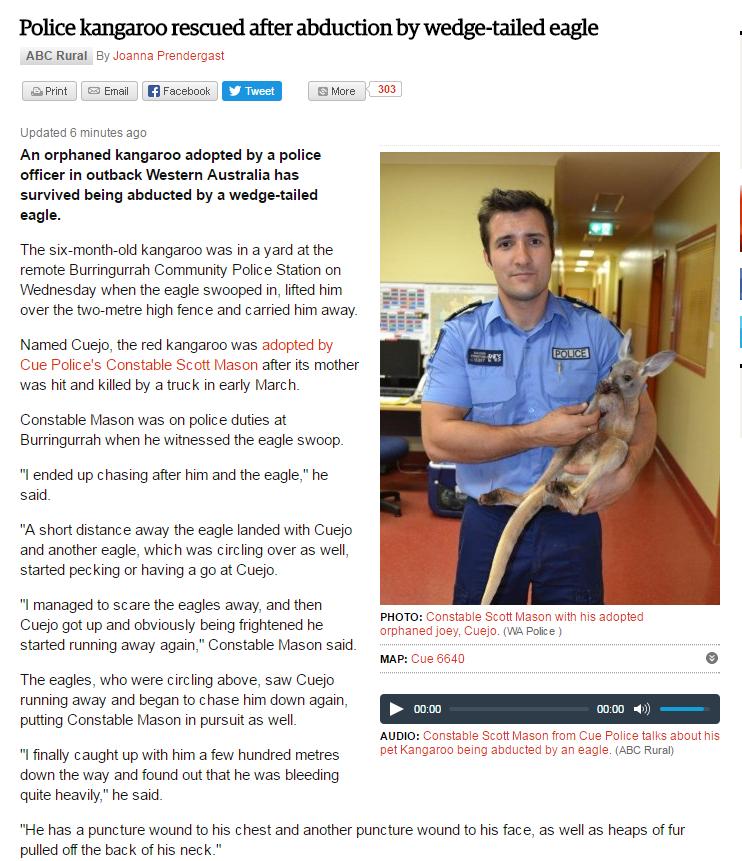
And here is the final part of the article with the all important weight.
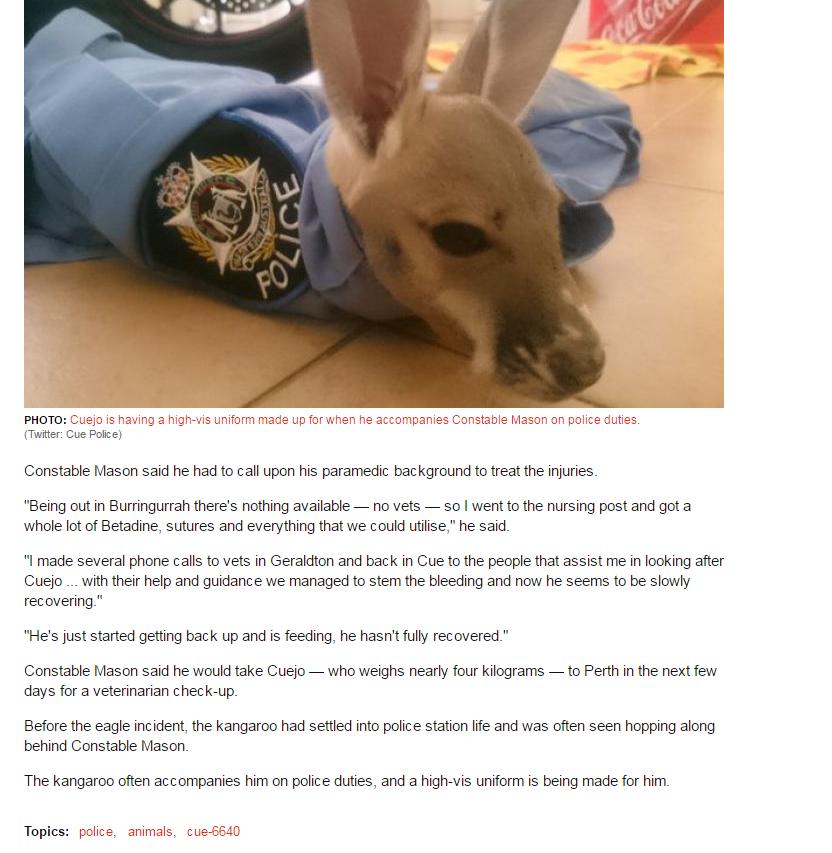
31 Oct 2017, Carina says: My 92 year old nan often tells a story of when she was a little girl and she was in a shop with her mum in Edinburgh (She lived on the Royal Mile) when she saw a very large eagle land on a baby’s pram outside the shop. She cries every time she tells this story and explains how she pulled at her mum saying ‘eagle’ ‘eagle’ but nobody believed her until the mother of the baby went outside and started screaming that her baby was gone. They found the baby dropped from a tree and the men who found her wouldn’t let the mother near as the baby’s head had smashed on the fall. My nan claims the eagle had escaped a local zoo. (I wondered if it had been Edinburgh zoo but again no info found) I haven’t been able to find anything further on this but her accuracy to detail and emotional state each time the story is told certainly sends shivers and prompted me to take a look further. Thought I’d share anyhoo.

